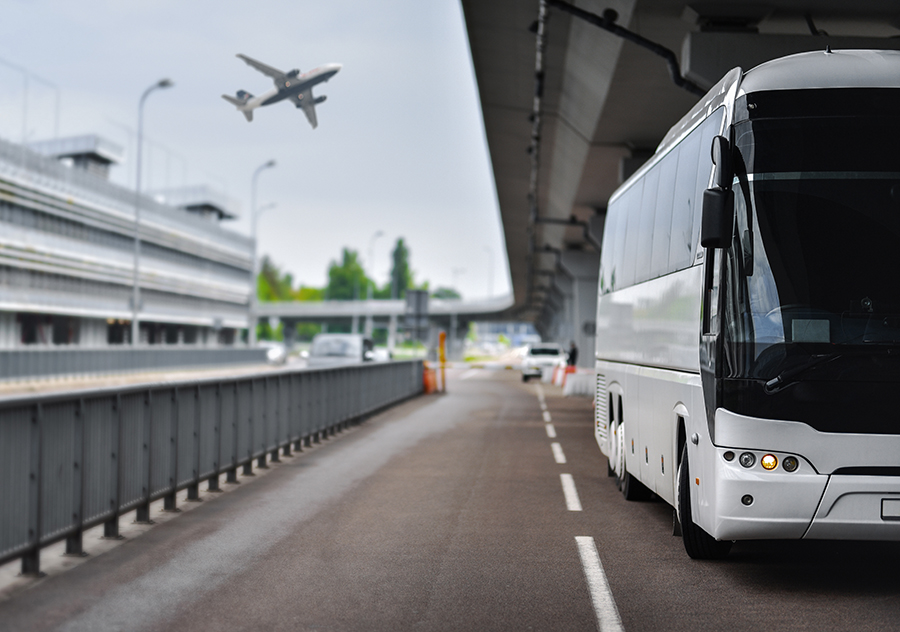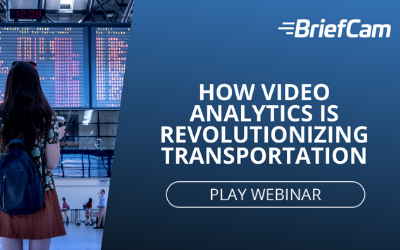How Transit Hubs Can Make Holiday Travels Safer and More Efficient

Optimize Traffic and Ensure Security
At any time of year, operations and security managers at transit hubs have two priorities: optimize the flow of traffic (human and vehicular) and ensure security of people and property. Those priorities become even more challenging around the holiday season, which kicks off with the annual Thanksgiving rush and lasts through the New Year. Holidays mean more travelers in the air, on highways and railways, which equates to more traffic, increased travel time and longer queues. An influx in travelers creates more security concerns at bus and rail terminals, metro transit stations and airports. Factor in potentially inclement weather that can happen in wintry, stormy locations, and the end result is a headache for travelers and transit hub managers alike. Besides increasing staff at check-in desks or security checkpoints, what can transit hubs do to combat these and other challenges faced during the holiday season? Below are some suggestions.
Maximize Video Surveillance Infrastructure
All major airports and major transit terminals have video surveillance cameras for remote monitoring of areas, such as subway stops, a railway stations, airport terminals and tarmacs, food courts, and security checkpoints. Some transit agencies oversee hundreds of cameras for security monitoring and traffic control. But there are commonly two problems with video camera networks: 1) devoting security staff to actively monitoring each camera feed in real-time is an inefficient use of manpower, and 2) the amounts of video data to manually review in the event of a security breach or incident are overwhelming. Fortunately, video content analytics technology complements video surveillance infrastructure to these and other challenges.
Improving Public Safety
Whether to prevent theft or safety threats, security staff at airports, train stations, bus stops and even seaports are understandably suspicious of unauthorized persons trying to access restricted areas and other similar activities. A video content analytics platform can be customized to send real-time alerts based on video objects, such as object activity in a defined restricted area, so that security can enhance situational awareness and assess potential threats immediately.
Or, in the event of a security incident, security officers may need to locate a person of interest that matches a particular description; that can be difficult or impossible when manually combing footage that includes hundreds or thousands of travelers in an airport terminal or train station. Instead of manually reviewing hours, days or weeks of video data to search for a missing child or suspected perpetrator, for instance, security staff can use the video analytics software to filter a search according to gender, clothing, and other powerful search combinations, to find specific people or objects across video feeds in a matter of minutes.
Monitor Crowds and Queues
Airport security staff often use video camera feeds to monitor activity at the check-in counters. However, especially during peak travel times it’s inefficient to dedicate staff to monitoring video surveillance in real time. A video analytics platform can trigger real-time alerts whenever an unusually large number of people dwells in a pre-defined area within in a specified time period. This could indicate crowding in a long queue for a check-in area or a security checkpoint, in which case additional staff can be assigned to keep queues moving. Also, to reduce wait times staff could be deployed to redirect travelers to less crowded checkpoints, reducing security risks, driving traffic efficiency and ensuring a more positive traveler experience.
Analyze Past Holiday Traffic Trends for Operational Insights
Many transit hub managers must rely on gut instinct and past experience to plan for the holiday spikes in traffic. However, when formulating holiday traffic optimization strategies, it would be helpful if they could reflect on quantitative data from previous years. Video analytics can translate huge volumes of video data in visual reports that display traffic patterns and activity heatmaps. For example, it can quantify the number of cars entering specific parking lots and visualize passenger traffic flow throughout transit terminals to enable operators to identify issues. Such reports help both security and operations staff in making data-driven decisions about scheduling and services to increase efficiency.
Educate Travelers in Advance
When people think about holiday travel, they most dread the long lines at ticket counters, check in and security points. One very basic thing that transit agencies and companies can do is educate travelers in advance about security rules. Some travelers are frequent flyers who are accustomed to going through TSA checkpoints; they know the rules of what can be carried in a carry-on bag vs. a checked bag, and they remember the standard protocols, like taking keys and coins out of their pockets before going through the scanning machine. But at holiday times many travelers are not seasoned, so this slows down queues at security checkpoints. Before a passenger packs their bags for their flight the next day, airlines could send the passenger a text or email message with a link to TSA guidelines for baggage, as well as baggage size guidelines for that particular airline.
Every Day vs. the Holidays
For transit managers and security staff, every day requires optimal security and efficiency, but those challenges are even greater and the stakes are even higher during the holiday season. A combination of implementing technology and ensuring best practices goes a long way toward increasing public safety and operational efficiencies, which in turn makes holiday travel less stressful for passengers and transit agencies alike.
More on Video Analytics for Airports and Transportation.

Signup to receive a monthly blog digest.